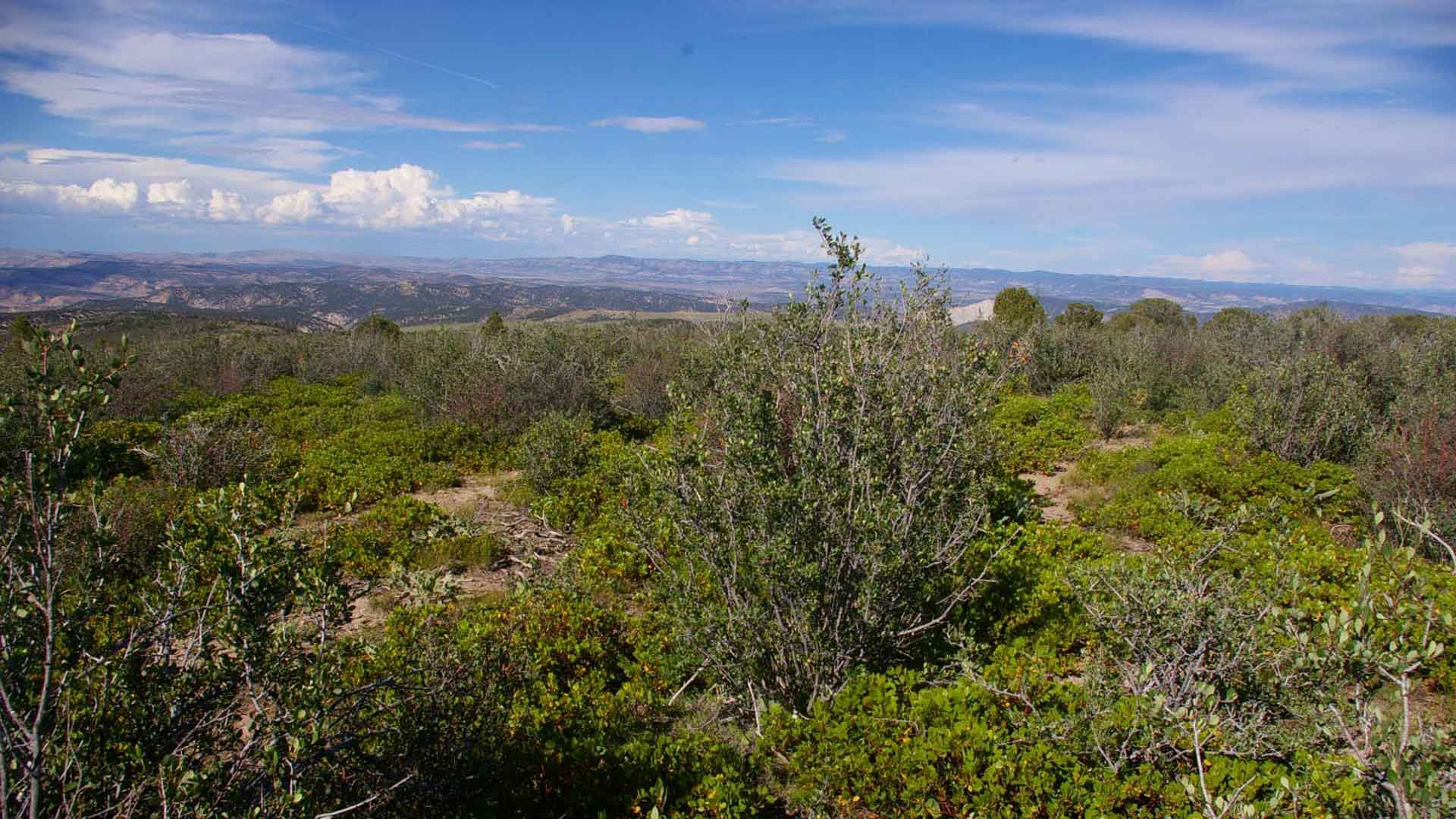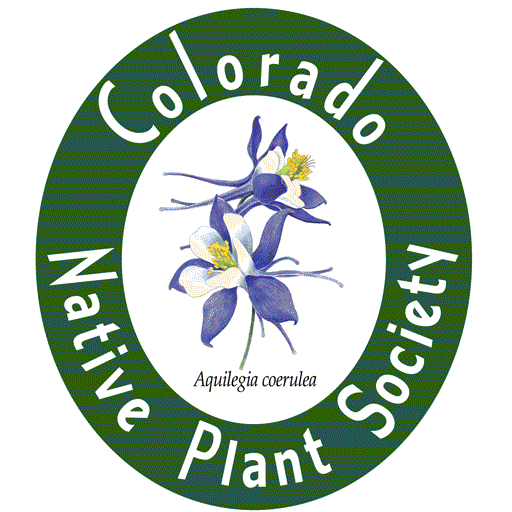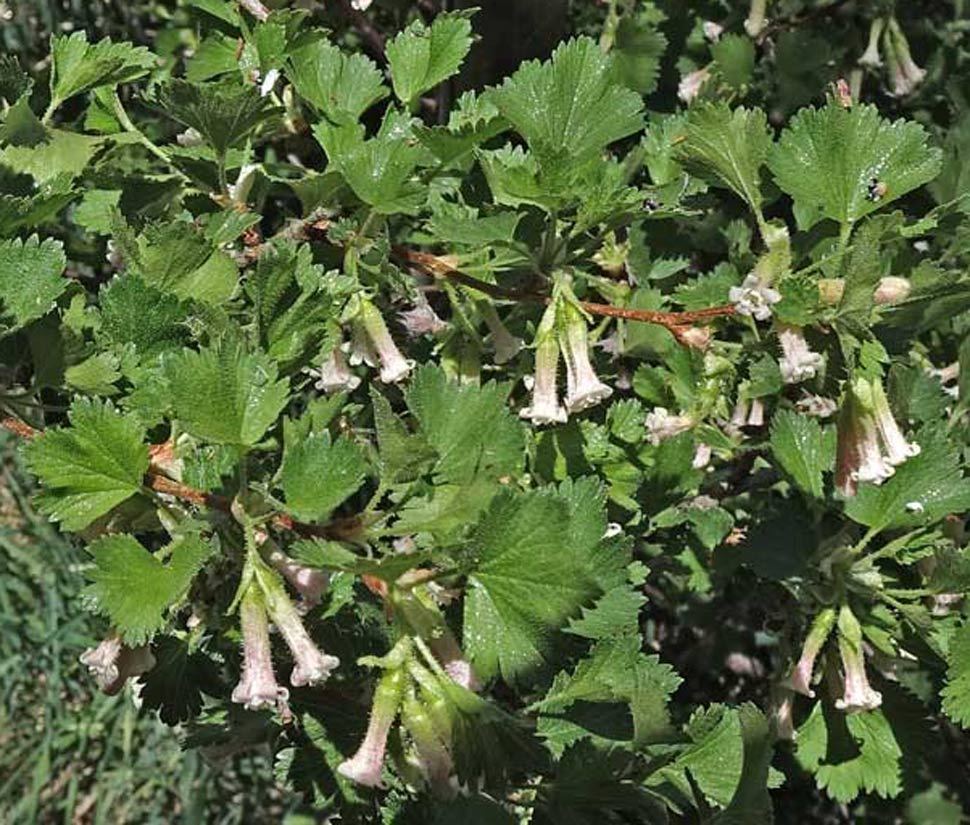Rocky Mountain Lower Montane-Foothill Shrubland
Upper Greasewood Creek, Rio Blanco County
Lower Montane – Foothill Shrubland
In Colorado, altitude plays a dominant role in determining where one finds different plant communities. At the lowest altitudes, the dominant plant community on the eastern slope is grasslands. Our grasslands on the Great Plains are hot and dry with fine soils. The only place that one finds shrubs or trees here is in damp areas along streams, or rocky outcrop areas.
As one moves up in altitude into the foothills and lower montane, however, the climate is less dry, and the soil is rockier. Both of these factors begin to favor the presence of shrubs. Move up further where the climate is even wetter, and one will find forests.
Rocky Mountain Lower Montane—Foothill Shrublands occur in that mid-range between the grasslands on the plains and forests in the montane. They are found in the foothills from 4,900 feet to the lower slopes in the montane up to 9,500 feet, but also can be found on canyon slopes, rock outcrops and mesas on the eastern plains of Colorado. All of these areas are characterized by exposed, dry, rocky substrates where it is too dry for trees to grow, and too rocky for grasslands to occur.
This community ranges from southern New Mexico, through the front range of Colorado and north to Wyoming, and also occurs on the Colorado western slope and the inter-mountain region. It is distinct from the Gambel Oak shrubland community, discussed on this website, by the absence, or very low presence (<5%) of Gambel Oak. Gambel oak shrublands generally grow in more mesic conditions. This habitat may include some patches of trees (Juniperus scopulorum, Pinus ponderosa) as well as grassy areas, but otherwise the dominant structure is shrubs.
Fire also plays an important part in this plant community because it maintains shrublands by eliminating the growth of trees. Most of its dominant shrubs, except Purshia tridentata, experience severe die-back from fire, but are able to survive by resprouting vigorously afterwards, or sprout from seed. The dominant shrub in this community, an indicator species, is Mountain Mahogany (Cercocarpus montanus) which actually requires a disturbance like fire to reproduce. It does so by root crown sprouting and seed sprouting.
The mix of species varies somewhat on the eastern and western slopes because of variations in the timing and amount of precipitation.
Some Indicator Plants
Click on photo to see full-page lightbox image.
In lightbox, click on X in upper right corner to return here.
Wax Currant (Ribes cereum)
Wax Currant (Ribes cereum), Gooseberry Family (Grossulariaceae), is a native shrub common in rocky places and dry hillsides, sometimes in pinyon-juniper or sagebrush, from the plains to the alpine on the eastern and western slopes. Blooms from April through August. Photo by swcoloradowildflowers.com.
Prevailing winds in Colorado generally come from the west. On the western slope, most of the precipitation comes from storms originating from the Pacific Ocean. The eastern slope, however, sits in the rain-shadow of the mountains, and receives most of its moisture from spring and summer storms which come from the Gulf of Mexico. In addition, conditions on the eastern slope are generally warmer and drier.
Birchleaf Mountain Mahogany (Cercocarpus montanus), Chokecherry (Prunus virginiana) and, to a lesser extent, Skunkbush Sumac (Rhus trilobata), are the most common shrubs, and are indicator species of this plant community in Colorado. White Snowberry (Symphorocarpos albus) and Wolfberry (Symphorocarpos occidentalis) are found in this community, but exclusively on the eastern slope, and Wax Currant (Ribes cereum) is more commonly found on the eastern slope.
On the other hand, Western Serviceberry (Amelanchier alnifolia) and Utah Serviceberry (A. alnifolia var. utahensis) are found almost exclusively on the western slope. Other primarily western slope species are Antelope Bitterbrush (Purshia tridentata), except for some documented collections from Boulder to the Wyoming border, and Mountain Snowberry (Symphoricarpos rotundifolius), except for some collections around Canon City and Trinidad in the southeastern counties. Four species of Rabbitbrush (Chrysothamnus) are also exclusively western slope species.
The most common grasses, found on both the eastern and western slopes are Blue Grama (Bouteloua gracilis) and Needle and Thread (Hesperostipa comata). Also in this community is Mountain Muhly (Muhlenbergia montana), an exclusively eastern slope species and Bluebunch Wheatgrass (Pseudoroegneria spicata), an exclusively western slope species.
The most common forbes on both the eastern and western slopes are Small-leaf Pussytoes (Antennaria parvifolia), Rosey Pussytoes (Antennaria rosea), Hairy False Goldenaster (Heterotheca villosa), Sulphur Flower (Eriogonum umbellatum), Prairie Bluebells (Mertensia oblongifolia), Louisiana Sagewort (Artemisia ludoviciana) Common Yarrow (Achillea millefolium), Wooly Cinquefoil (Potentilla hippiana), and five species of Astragalus; Two-grooved Milkvetch (A. bisulcatus), Lesser Rushy Milkvetch (A. convallarius), Flexible Milkvetch (A. flexuosis) and Rocky Mountain Milkvetch (A. scopulorum).

We are a non-profit organization dedicated to furthering the knowledge, appreciation and conservation of native plants and habitats of Colorado through education, stewardship and advocacy.
Administration (virtual office)
1536 Wynkoop Street, Suite 911
Denver, Co 80202 Office@conps.org
Bookstore, Events & Programs
704 East Boulder Street
Colorado Springs, CO 80903
Orders@conps.org

